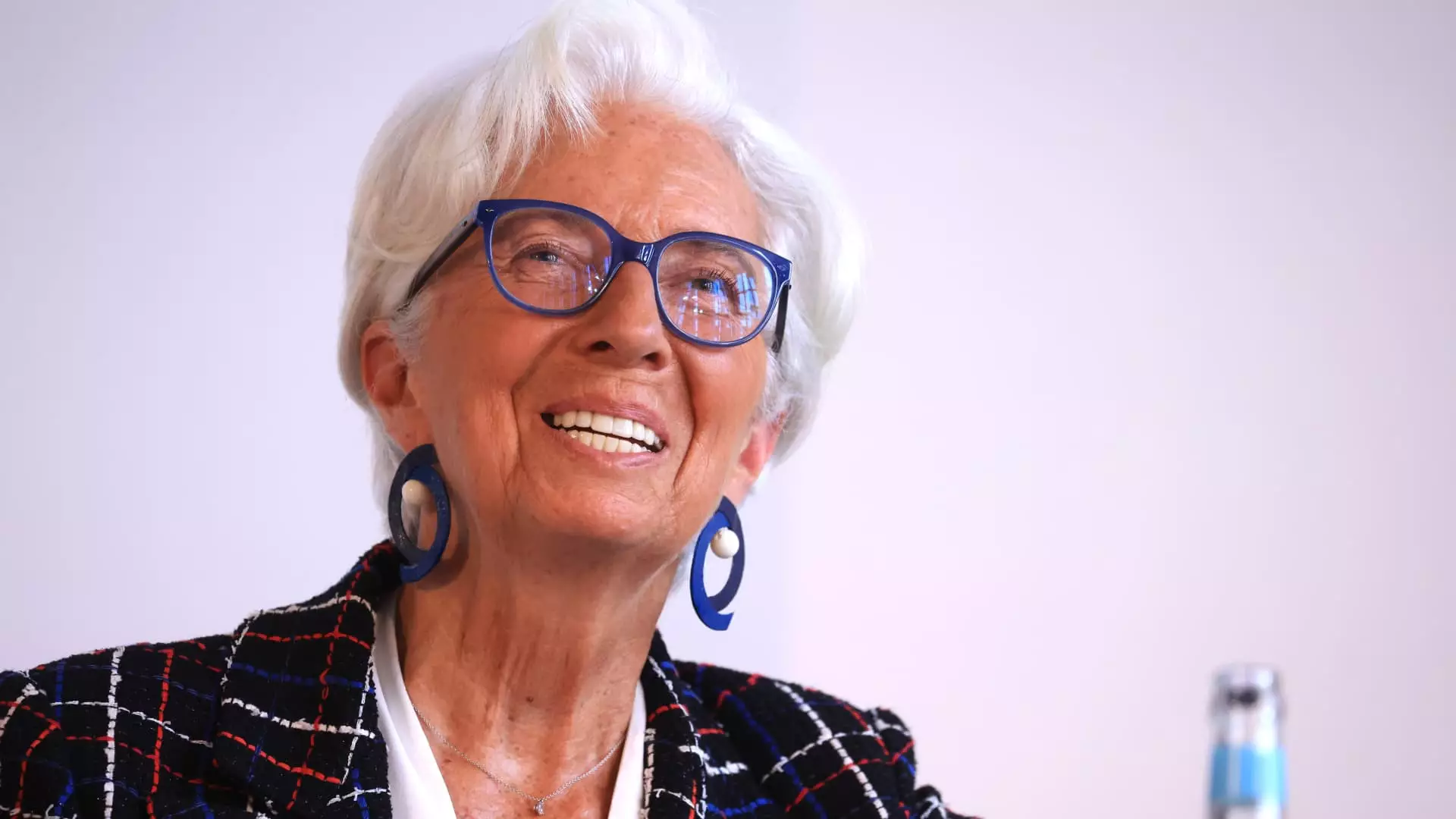On Thursday, the European Central Bank (ECB) made headlines by announcing a decisive 25-basis-point reduction in interest rates, nudging the deposit facility rate down to 2%. This shift marks a significant departure from the mid-2023 peak of 4%, casting a spotlight on the central bank’s shifting approach to monetary policy. Analysts had predicted this move, with data from LSEG indicating an almost unanimous expectation among traders for the quarter-point cut. Thus, while the ECB’s decision was anticipated, it underscores the ongoing volatility in the European economy.
The market’s response to the ECB’s announcement reflected a cautiously optimistic sentiment, as the pan-European Stoxx 600 index looped into green territory, demonstrating a 0.3% increase. Meanwhile, the euro slightly edged upward against the dollar, a small but meaningful sign of restored confidence in the currency. However, beneath this comparative calm lies a deeper narrative filled with complexities—one that reveals an economy grappling with precarious inflation rates and global economic tensions.
Inflation: The Double-Edged Sword
Inflation dynamics are at the forefront of the ECB’s considerations, shaping its policy decisions. Recent data indicated that Eurozone inflation fell under the critical benchmark of 2% for the first time in recent history, resting at 1.9%—an unexpectedly favorable development. The ECB revised its projections for average inflation, expecting it to hover around 2% in 2025, a drop from the earlier expectation of 2.3%. Such a downward revision may initially seem like a victory for consumers; however, it suggests a broader economic malaise that could highlight systemic weaknesses rather than robust growth.
While core inflation projections were revised upwards, indicating increased costs in essential categories, this reflects continuous pressures that could stifle broader economic progress. The ECB’s decision to adjust its forecast illustrates the delicate balance policymakers must maintain between stimulating growth and keeping inflation in check—a task that grows increasingly difficult in a globally interconnected marketplace.
Stunted Growth and Geopolitical Woes
Despite tweaks in monetary policy, the reality is that the Eurozone economy continues to showcase lackluster growth. With a mere 0.3% expansion visible in the first quarter of 2025, the ECB’s unchanged growth forecast for 2025 at 0.9% calls into question the effectiveness of interest rate cuts. While the institution remains hopeful that government spending on defense and infrastructure will bolster growth in the medium term, the immediate outlook remains bleak. The uncertainty surrounding trade policies, significantly fueled by geopolitical tensions, looms large over Eurozone industries.
Donald Trump’s administration has implemented tariff measures that pose a direct threat to key European sectors such as steel and automotive manufacturing. The ripple effects of these tariffs could curtail investment and productivity, pushing back against any potential growth the ECB might anticipate. Interestingly, the impact of such tariffs on inflation is murky at best. It could either put upward pressure on prices or compel the European Union to retaliate, a course of action that could further destabilize the existing equilibrium.
The Bigger Picture: Rethinking Priorities
The ECB’s recent maneuvers come at a crucial intersection of monetary policy and socio-economic realities that demand introspection. The central bank must navigate not only the domestic economic landscape but also the shifting tides of global relations that influence trade and investment. The focus on increasing defense spending across Europe raises ethical considerations alongside economic ramifications, pushing the ECB to rethink its priorities and, perhaps, its foundational goals.
In embracing a more flexible monetary policy in response to rapidly changing circumstances, the ECB finds itself perched between driving economic recovery and grappling with potentially adverse impacts from global geopolitical tensions. The challenges ahead are manifold, requiring a nuanced and responsive approach that prioritizes stability while also fostering growth in a fractious international arena. Ultimately, the next steps taken by policymakers will significantly influence not just the Eurozone’s immediate outcomes, but the broader interplay of economic relations in an increasingly unpredictable world.

Leave a Reply